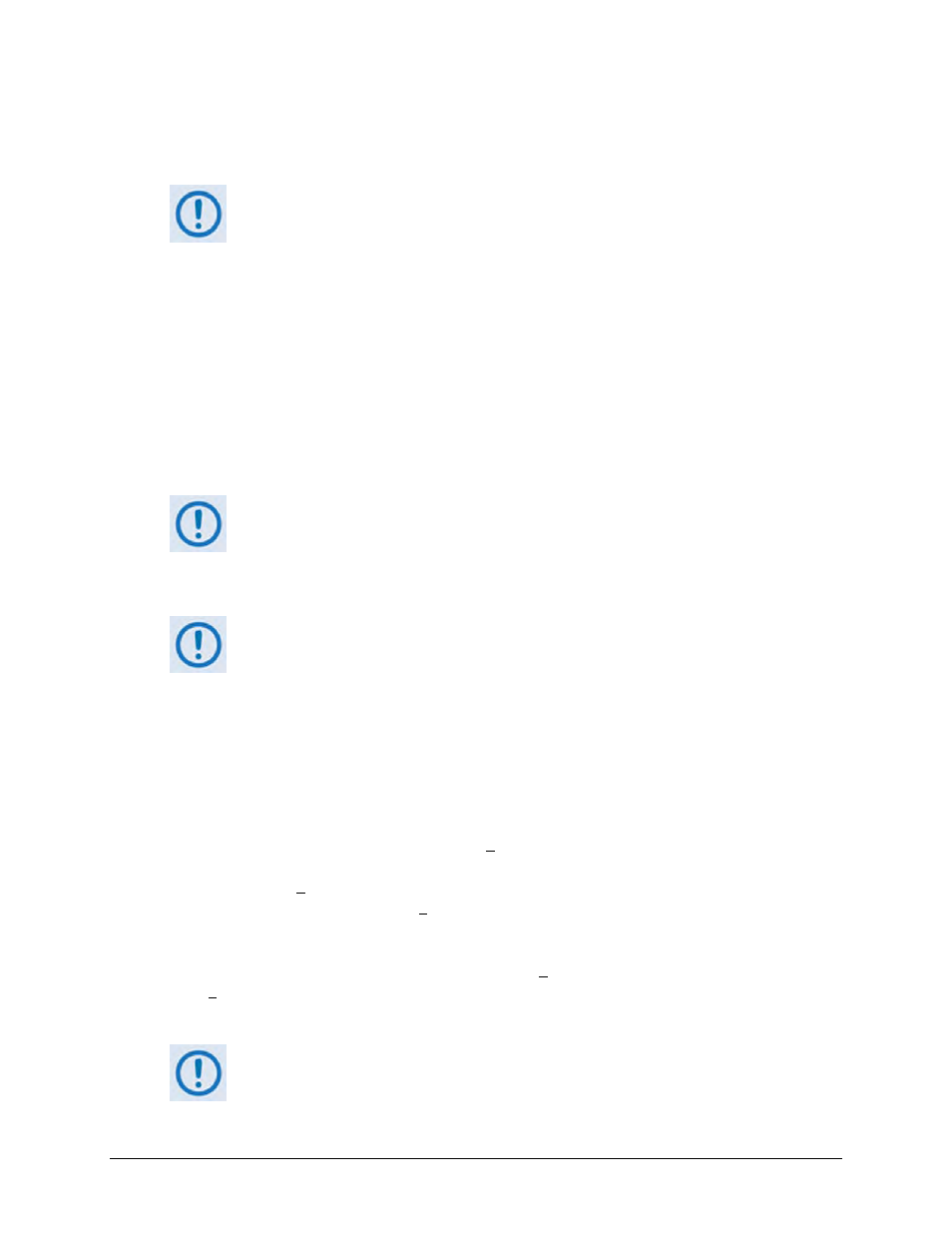Comtech EF Data CDM-840 User Manual
Page 231

CDM-840 Remote Router
Revision 2
Appendix F
MN-CDM840
F–11
An integral number of VersaFEC blocks are used for both the preamble and the data segment;
the guard band will vary due to system timing uncertainties and propagation delay due to the
geographic dispersion of the CDM-840s.
A Guard Band of 50ms is sufficient in most cases to accommodate geographical
latency differences and internal timing errors.
The preamble is pre-determined based on calibration tables for receiver acquisition at the
current data rate and MODCOD. The data segment is sized to support the largest messages
needed to complete the Entry Channel handshake protocol and maintain status and CDRP. The
actual size (in milliseconds) of each slot is therefore a function of the data rate and the number
of bits in a VersaFEC block for the ModCod of the ECM channel.
When a CDM-840 is ready to transmit, it waits for receipt of a TAP message that establishes time
synchronization between all CDM-840s. The TAP message also describes the configuration of the
Entry Channel Control receiver. The CDM-840 uses the information in the TAP to configure its
own Tx parameters and then checks for available Aloha Slots. If slots are available, it randomly
selects one of the available slots.
During heavy use, it is possible that all available slots will be dedicated to CDM-
840s that have already initiated the entry handshake although this situation should
never last more than two cycles unless there are collisions or degraded link state.
The slot number, multiplied by the total slot length (in milliseconds) provides the start time for
transmission, which is always relative to the receipt of the last TAP message.
The total slot length is the sum of the Guard Band, Preamble, and Data Segment
that are all provided in the TAP message.
After transmitting its request, the CDM-840 waits for the next TAP message that indicates if that
transmission was detected by the Entry Channel Controller. If the transmission is detected, the
CDM-840 receives an assigned slot in the current frame and continues to receive assigned slots
until it indicates it has completed its entry protocol. If the next TAP does not include an assigned
slot, the CDM-840 assumes a collision occurred and begins the backoff algorithm.
The backoff is based on contention levels of 2
n
(where n = 0 to 4; i.e. 2
0
=1, 2
1
=2, 2
2
=4, 2
3
=8, and
2
4
=16). The Contention Level always starts at 0, which means the CDM-840 transmits in the next
frame when it receives a TAP message. If the transmission is not detected, the CDM-840 goes to
Contention Level 1 and picks a random slot in one of the next two frames. If it is still not
detected, Contention Level goes to 3 and the CDM-840 randomly picks a slot in one of the next
four frames.
If the CDM-840 is not detected by Contention Level 4 (16 frames), it then resets to Contention
Level 0 and tries again – the CDM-840 uses one random number to select a frame at the current
contention level and another random number to select a slot within the frame.
Since the CDM-840s are not aware of each other, their Contention Levels are
independent and determined only by when they were initially ready to transmit.